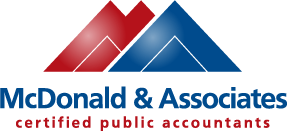Customer Retention Metrics You Need to Know
Your business’s ability to retain customers is one of the most important components to sustained growth and profitability. Here are the three retention metrics useful for every business owner.
Retention rate. Most customer retention is measured over a set period of time, typically one year. To determine your rate, take a look at the number of customers who ordered from you last year. Then see what percent of them order at least once from you over the current year. If you measure this percent each month you can see how your retention builds throughout the year. The key is to compare your retention rate to the same period in prior months and years. A rising rate means you are on the right track; a shrinking rate means you need to make changes. According to the Harvard Business Review, a 5% increase in your retention rate increases profits by 25% to 95%!
Example: Cut’em Nail Salon starts the year with 700 active clients. They add 300 new customers during the year, and their active client base is 800 at the end of the year. On the surface things look good, right? This increase of 100 clients is over 14%! But when you calculate the retention rate, it is 71.4% (800 clients minus 300 new clients means 500 of last year’s clients still use Cut’em. 500 divided by 700 equals 71.4%). What happened to the 200 customers that did not return? Cut’em doesn’t know if this is good or bad news, as it only makes sense when comparing it to the last few years’ retention performance.
Existing customer revenue percentage. Core customers almost always contribute the most to your profitability. But how much? To figure out your returning customer revenue percentage, start with a list of revenue by customer for the last 12 months. Identify the returning customers and add up revenue attributed to them. Divide that number by your total revenue. Use this information to balance your spending between new customer acquisition and retaining your core customers. If you are like most businesses, you will realize there is tremendous value in spending more time and effort on retention, even when your business is full!
Part 2 Cut’em Nail Salon Example: Assume the nail salon’s total revenue is $1 million and the revenue from the 500 returning clients is $900,000. In this case, the core customers represent 90% of the revenue but only 62.5% (500 divided by 800) of the customers!
Most valuable customers. Now identify which customers spend the most and buy the most often. Odds are, many of your top customers have similar characteristics. In the end, your goal is to keep these customers happy and get more just like them!
Part 3 Cut’em Nail Salon Example: In the example above, the average revenue per client is $1,250 per client or over $100 per month ($1 million divided by 800 clients). If the top 20 clients represent $100,000 in revenue or $5,000 per client, you can quickly see how important they are!
The key take away is that sustained growth and profitability comes from the core customers you retain each year. And the best place to start is to calculate and understand your retention numbers and their trend.


